As parents, two infections sit high on the worry list: hand, foot and mouth disease (HFMD) and influenza (flu). Both spread quickly among children, interrupt school and childcare, and ripple through the whole household. This guide explains when these illnesses tend to surge in Malaysia, where they usually spread, how they move through kid communities, and—most importantly—what you can do to lower the risk. We’ll finish with easy, practical habits you can start today and a quick introduction to a family-friendly sanitizer option you can use at home and on-the-go.
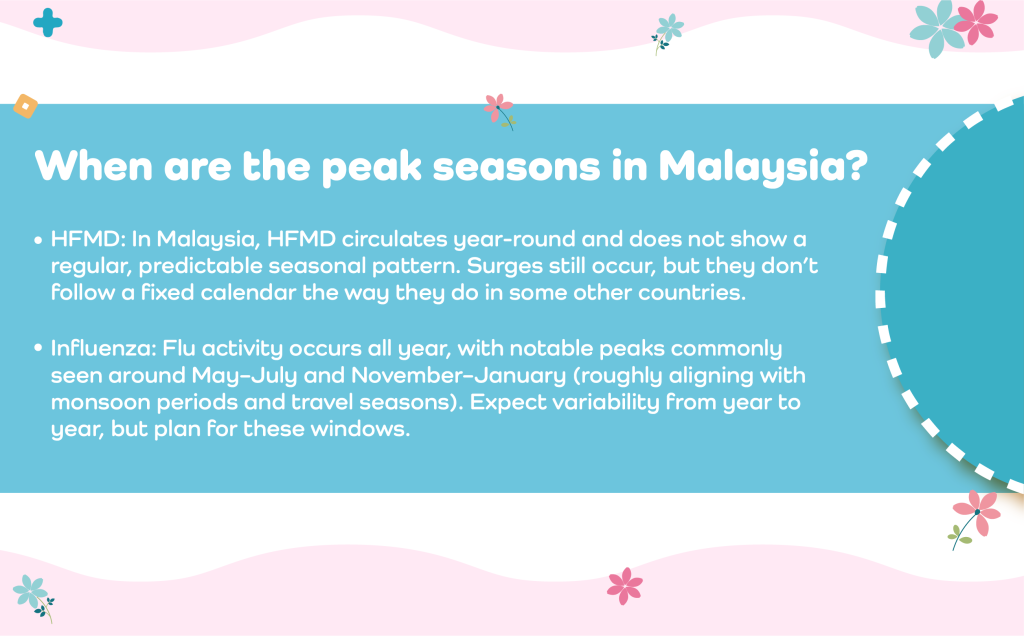
Where do cases usually happen?
- Early-childhood settings: Childcare centres, kindergartens, nurseries, and preschools report a large share of HFMD clusters; these environments concentrate many close-contact interactions.
- Free Malaysia Today
- Homes and extended family care: Siblings and caregivers can bring infections home from school or work; shared items and close playtime raise risk.
- Indoor play areas & tuition/enrichment classes: Shared toys, sports gear, crayons, and tables mean frequent contacts and high-touch surfaces.
- Transport and waiting areas: Car pools, vans, and clinic waiting rooms pack kids in close quarters.
Why focus on kids?
- HFMD is most common in young children; many infections run mild, but outbreaks can move fast through a class.
- Influenza affects all ages, but children efficiently amplify spread because they shed high viral loads and have lots of close contacts.
- Classroom dynamics—shared materials, circle time, nap mats—create repeated, short-range contacts.
How do these infections spread among kids?
- Respiratory droplets: Talking, laughing, coughing, sneezing—especially at close range.
- Hands and high-touch surfaces: Desks, toys, doorknobs, railings, shared stationery; kids touch faces often.
- Fecal-oral route (HFMD): Virus can be present in stool; diaper changes and poor toilet hygiene can seed surfaces.
- Objects (toys) as fomites: Enteroviruses can persist on common toy materials, supporting indirect spread if cleaning is inconsistent.
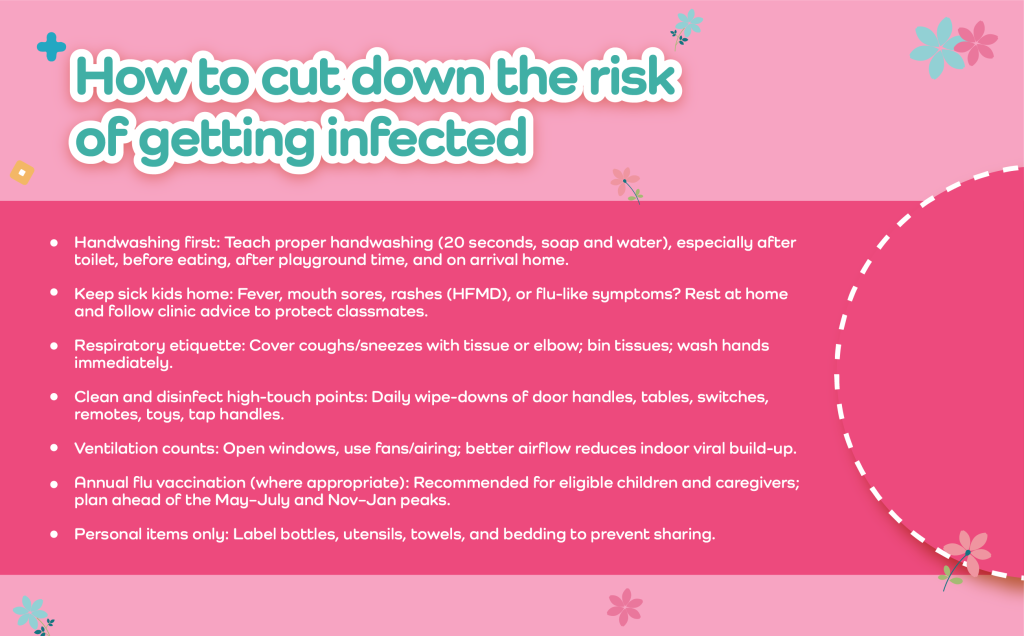
Best practice checklist to keep risk low
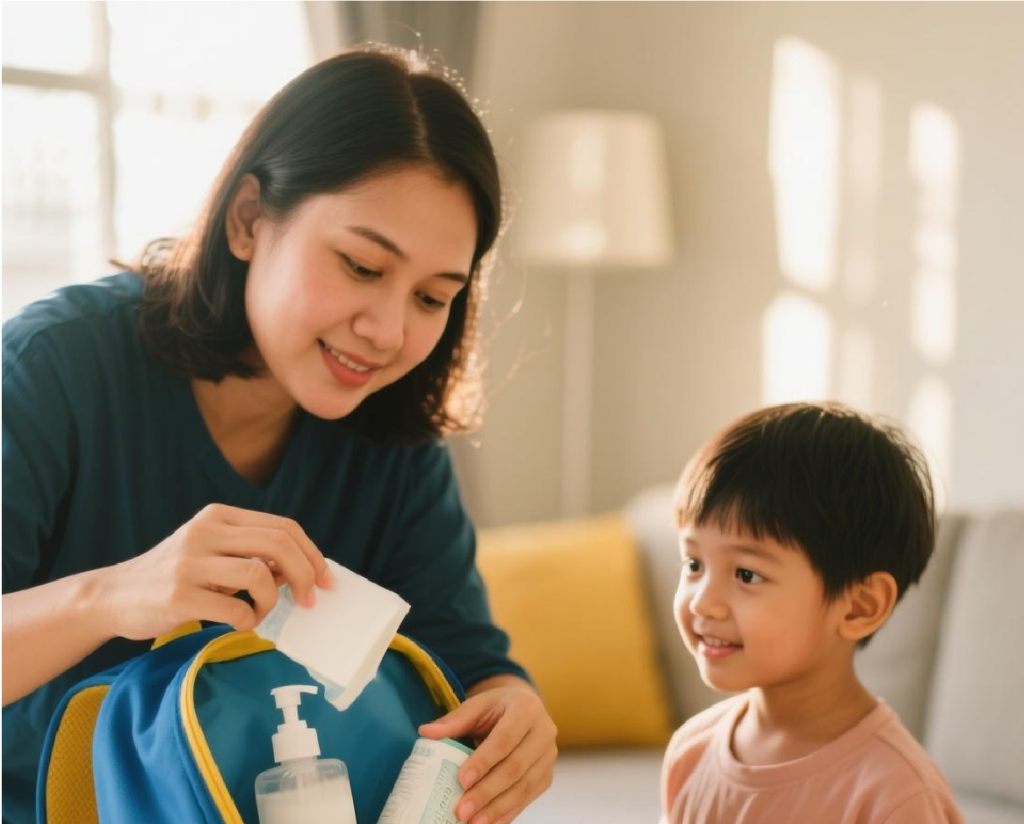
School bag routine:
- Pack tissues and a small alcohol-based sanitizer (for older kids) or a gentle, child-safe alternative as advised by your pediatrician.
- Include wipes for hands and surfaces before snack time.
Home routine:
- Entry station: Handwash immediately after returning home; set a visible reminder.
- Toy rotation & cleaning: Wash/disinfect frequently handled toys several times a week; air-dry thoroughly.
- Laundry & linens: Wash pillowcases, blankets, and soft toys regularly—more often during illness.

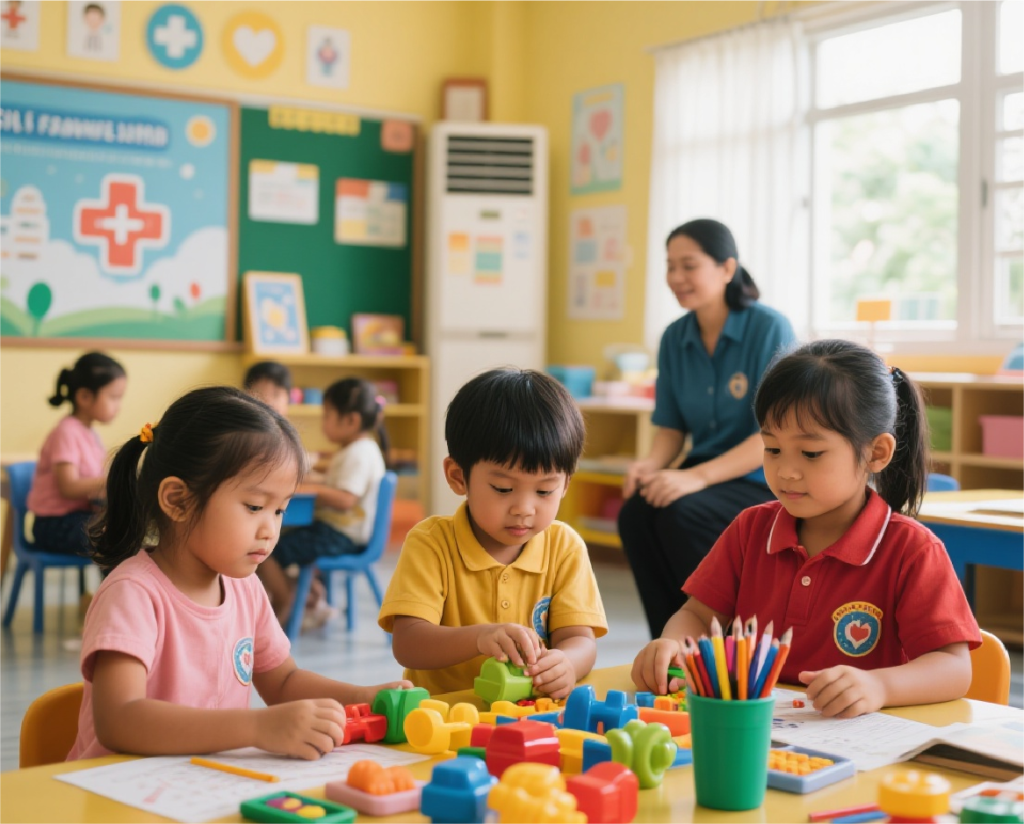
Classroom/centre partnership:
- Confirm the centre’s cleaning schedule (toys, tables, toilets).
- Ask about isolation protocols for symptomatic children and communication when cases occur.
- Encourage outdoor play when weather allows to improve ventilation.
Travel & outings:
- Wipe public-facing surfaces (highchairs, trolley handles).
- Keep snacks hand-clean—sanitize or wash before eating.

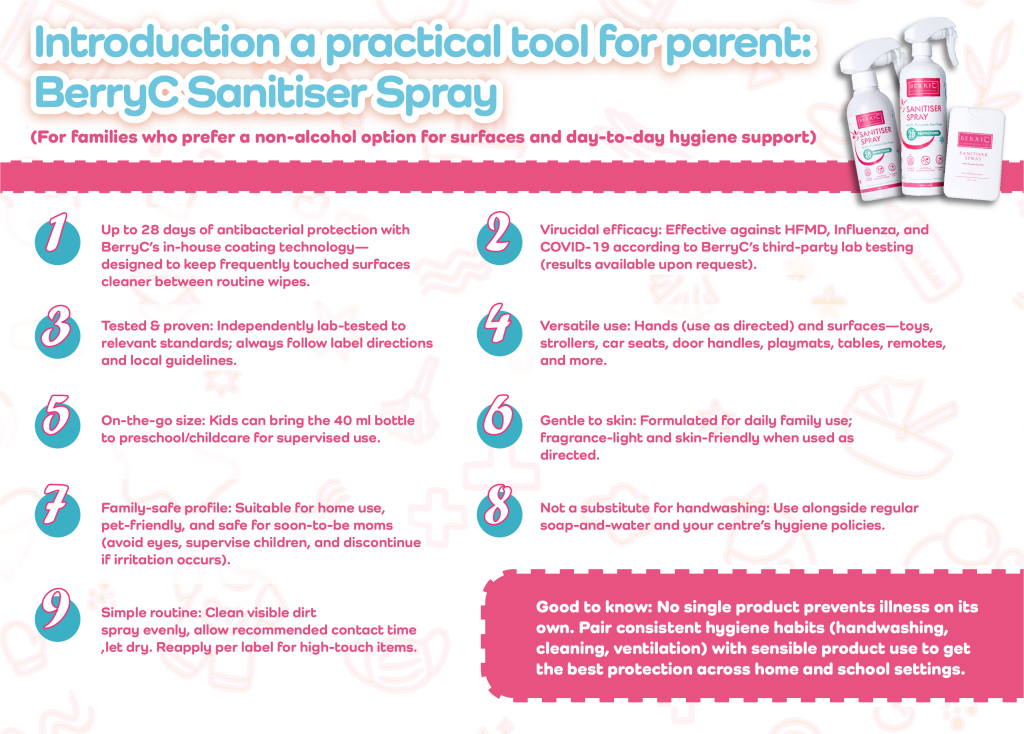
Summary
Malaysia sees year-round circulation of HFMD and influenza, with flu peaks commonly appearing around May–July and November–January, while HFMD surges don’t follow a strict season but occur frequently in child-dense settings like childcare centres and preschools. Your best defence is practical: handwashing, staying home when unwell, surface cleaning, good ventilation, and smart routines for school bags and home.





